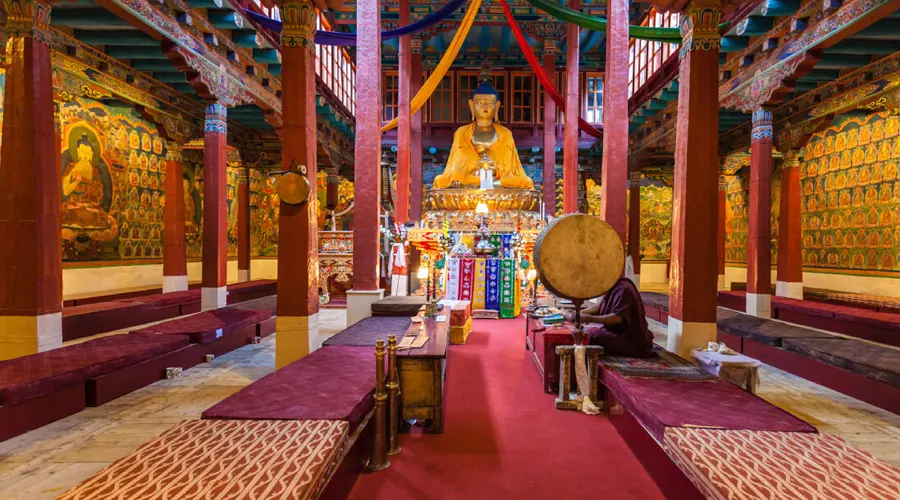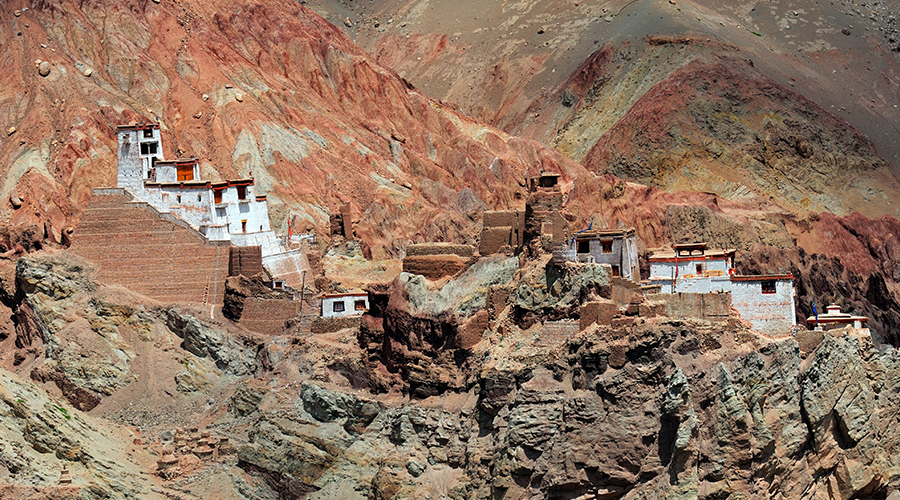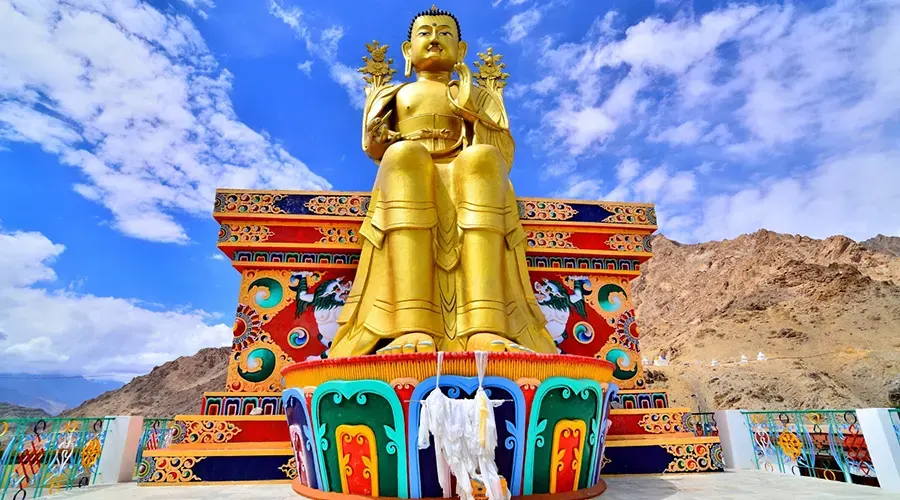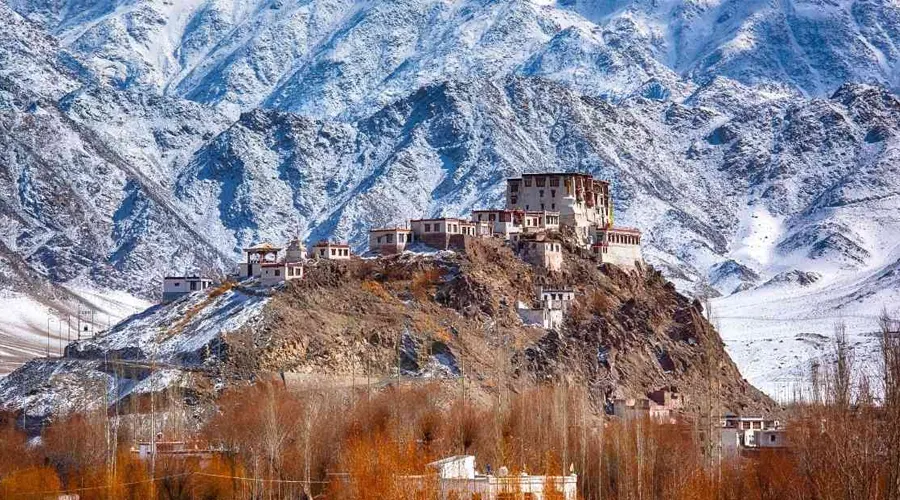Shanti Stupa
Built to promote world peace and prosperity as well as to commemorate 2500 years of Buddhism, Shanti Stupa is the major attraction in Leh. Perched on the mountain top, this religious place also offers a panoramic view of the city and the surroundings, and thus is a must-see.
This attraction in Leh was built as a part of the Peace Pagoda Mission by Japanese Buddhist Bhikshu. Underneath the stupa is the relic of the Buddha. Sunrise and sunset are considered to be the best time of the day to visit the Shanti Stupa when views from this place to visit in Leh are spectacular.
History
The original idea for the construction of Shanti Stupa was conceived by Nichidatsu Fujii, also known as Fuji Guruji, in the year 1914. The stupa was constructed under the joint efforts of Japanese and Tibetan monks, under the supervision of Bhikshu Gyomyo Nakamura and Kushok Bakula, the then Llama of Ladakh.
The project of the Shanti Stupa was a part of the ‘peace pagoda mission’, which sought to establish pagodas across the world. Funded by the Indira Government, the construction of the Stupa began in the year 1983. Construction was completed in 1984, and the Shanti Stupa was formally inaugurated in the year 1991, by the then Dalai Lama Tenzin Gyatso.
Structure
The architectural style of the Shanti Stupa does not resemble the traditional Buddhist stupa structure, making it a unique attraction in Ladakh. The whitewashed structure rises to two storey with a dome on the top. A series of 500 steps lead up to the stupa, and the staircase is flanked by Buddhist stone pyramids on each side.
The first level of the Stupa features an image of Lord Buddha turning the Dharmachakra wheel. The walls of the Shanti Stupa on the second level are carved with colorful relics that depict the significant events of Lord Buddha’s life. The dome sitting on the top of the stupa signifies the mound of dirt under which Lord Buddha was buried, and the railing that covers the dome resembles the fence that was built around the mound.


























